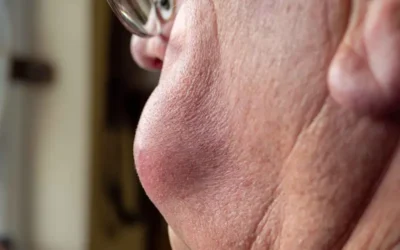CPT codes are updated and republished on an annual basis by the American Medical Association (AMA). Expert AAPC-certified coders in established medical coding companies keep track of these changes and report them correctly, enabling the orthopedic practices they serve to maximize reimbursement. This year, orthopedists need to pay attention to the changes to pelvic fracture coding. Effective January 1, 2017, the AMA has introduced two new CPT codes to report pelvic ring fractures. The new codes 27197 and 27198 provide greater specificity and replace deleted codes 27193 and 27914.
New and Deleted CPT Codes for Pelvic Fracture
Deleted:
- 27193 Closed treatment of pelvic ring fracture, dislocation, diastasis or subluxation; without manipulation
- 27194 Closed treatment of pelvic ring fracture, dislocation, diastasis or subluxation; with manipulation, requiring more than local anesthesia
Added:
- 27197 Closed treatment of posterior pelvic ring fracture(s), dislocation(s), diastasis or subluxation of the ilium, sacroiliac joint, and/or sacrum, with or without anterior pelvic ring fracture(s) and/or dislocation(s) of the pubic symphysis and/or superior/inferior rami, unilateral or bilateral; without manipulation
- 27198 Closed treatment of posterior pelvic ring fracture(s), dislocation(s), diastasis or subluxation of the ilium, sacroiliac joint, and/or sacrum, with or without anterior pelvic ring fracture(s) and/or dislocation(s) of the pubic symphysis and/or superior/inferior rami, unilateral or bilateral; with manipulation, requiring more than local anesthesia (i.e., general anesthesia, moderate sedation, spinal/epidural)
These two new codes allow for a more accurate identification and revaluation of these services.
2017 Code Changes based on Nature of Treatment for Pelvic Injuries
The anatomical structure of the pelvis, the types of injuries that can occur to the bones and the differing treatments explain why the new procedural codes for pelvic fracture were necessary. The pelvis, the collection of bones located at the base of the spine, can be fractured by a traumatic, high-energy event such as a car crash. Even lower impact incidents such as a minor aging-related fall can cause pelvic fractures. Key points about pelvic bone injuries:
- A fracture in one part of the pelvic structure often causes a fracture or damage to ligaments at another point in the structure.
- The fracture may be “stable” – one break in the pelvic ring or “unstable” – 2 or more breaks in the pelvic ring with displacement of the broken bones.
- In pelvic ring fractures, the pelvic ring is damaged anteriorly and posteriorly in 2 or more places.
- In open fractures, the bones stick out through the skin; a fracture is described as closed when the skin is not broken.
While conservative care may be sufficient for lower-energy fractures, treatment for high-energy pelvic fractures usually involves surgery to reconstruct the pelvis and restore stability so that patients can get back to routine activity. Open fractures are especially serious as the broken skin can lead to infection in both the wound and the bone. These features of pelvic fractures clearly indicate why the new CPT codes were necessary. Deleted codes 27193 and 27914 were generic and simply referred to “pelvic ring fracture, dislocation(s), diastasis or subluxation. On the other hand, new codes 27197 and 27198 specify “posterior pelvic ring fracture, dislocation(s), diastasis or subluxation.” Previously, posterior pelvic ring fractures that may require more observation and also surgery were described using a single code. The new CPT codes take account of these factors and give due consideration to the efforts needed for these distinctly different treatments.
New Codes distinguish Treatment with and without Manipulation
Code 27197 should be used to report closed treatment of posterior pelvic ring fracture, or related acute pathological conditions of the pelvis or adjacent structures, without manipulation, i.e., without movement of the fragments of the bone. Code 27198 should be used to report the above-mentioned procedure, but with manipulation. As movement of the fragments of bone can be very painful, manipulation under anesthesia (such as general anesthesia, conscious sedation, or spinal block) is medically necessary for pelvis for acute traumatic fracture or dislocation.
When Not to Use 27197 and 27198
According to CPT guidelines, an appropriate evaluation and management (E/M) service code should be used in place of 27197 and 27198 for closed treatment of anterior (vs. posterior) pelvic ring fracture and dislocation(s) of the pubic symphysis and superior/inferior rami (unilateral or bilateral). To maximize revenue, orthopedic practices need to have the resources and expertise to be able to document and code claims accurately and to the highest level of specificity. Orthopedists can get paid for the valuable work they do by partnering with an experienced Orthopedics Medical Billing and coding company.



